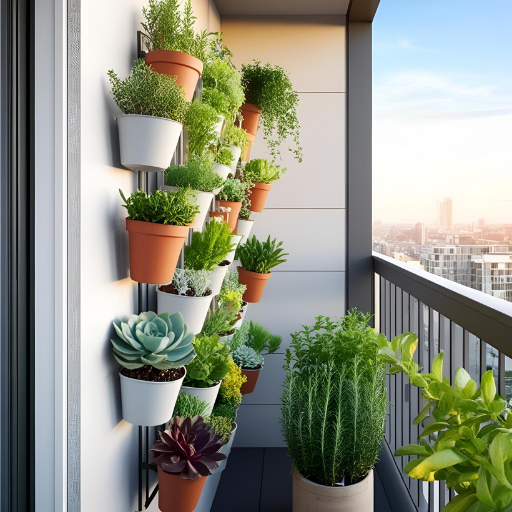Why Space Doesn’t Have to Be a Limitation
Gardening is not just for people with large backyards or extensive outdoor areas. With a little creativity and planning, even the smallest balcony, window ledge, or corner of a room can be transformed into a thriving green space. Urban gardeners and apartment dwellers around the world are proving that lush gardens are possible, regardless of square footage.
In this article, you’ll discover practical, beautiful, and effective ways to start a garden in small spaces. Whether you have a balcony, a patio, or just a sunny windowsill, this guide will show you how to make the most of it.
Assess Your Available Space
Before diving into what to plant, take a good look at your space. Is it indoors or outdoors? Does it get direct sunlight, partial shade, or is it mostly dark? The answers will help determine which plants you can grow successfully and how to arrange them.
-
Balconies and Patios: Ideal for small container gardens. You can use railings, walls, and vertical shelves.
-
Windowsills: Great for herbs and small flowers.
-
Wall Space: Perfect for hanging planters or vertical gardens.
-
Corners of Rooms: Can host large indoor plants or stacked plant shelves.
Choose the Right Containers
When working with limited space, containers become your best friends. Choose containers that suit both the style and functionality of your area.
-
Self-watering pots are perfect if you’re busy and often forget to water.
-
Stackable planters save space and create a tiered garden look.
-
Hanging baskets and wall-mounted pots keep the ground clear.
-
Vertical planters are ideal for herbs, lettuces, and strawberries.
Don’t forget to ensure proper drainage to prevent root rot and other moisture-related problems.
Select Plants That Thrive in Small Spaces
Some plants are better suited to confined spaces than others. Opt for compact, fast-growing, or multipurpose plants.
Great options include:
-
Herbs: Basil, thyme, oregano, parsley, and mint.
-
Leafy greens: Lettuce, arugula, spinach, and kale.
-
Vegetables: Cherry tomatoes, radishes, baby carrots, and peppers.
-
Flowers: Marigolds, petunias, pansies, and violets.
-
Succulents and cacti: Ideal for sunny indoor spots with minimal watering needs.
Maximize Vertical Space
One of the best ways to garden in tight quarters is to go vertical.
Try these vertical gardening ideas:
-
Ladder shelves or bookshelves repurposed for plant display.
-
Hanging pocket planters that can be hung on doors or walls.
-
Trellises for climbing plants like peas, beans, and cucumbers.
-
Wall-mounted racks or pallets with pots attached.
Vertical gardens add visual interest while multiplying your growing space.
Use Multi-Level Surfaces
If vertical gardening isn’t an option, you can still create levels on horizontal surfaces. Use stools, crates, or plant stands to elevate some of your pots. This not only looks good but also gives each plant better access to sunlight.
Try grouping plants by height and light needs to create a tiered mini-garden that’s both functional and beautiful.
Consider Portable Gardens
If you don’t have a fixed space, go mobile! Use planters with wheels or lightweight containers that can be easily moved to follow the sun or be taken indoors during bad weather.
This is especially useful for renters or those who want flexibility in their garden layout.
Make Use of Railings and Windowsills
Railings can be fitted with special balcony boxes or hanging planters. These are great for trailing plants or compact veggies. Windowsills, especially those that receive sunlight, can be transformed into productive herb gardens or flower displays.
Lighting for Indoor Gardens
If your available space doesn’t get much natural light, don’t worry. LED grow lights have made indoor gardening more accessible than ever.
These energy-efficient lights mimic sunlight and can be mounted under cabinets, on walls, or even clipped onto furniture. They’re perfect for:
-
Herbs
-
Leafy greens
-
Seedlings and microgreens
Maintain with Minimal Tools
You don’t need a shed full of tools to start a small-space garden. A few basics will do:
-
Small hand trowel
-
Pruning scissors
-
Watering can or spray bottle
-
Fertilizer suitable for container gardening
-
Gloves (optional, but useful)
The key to success is consistency. Even small gardens need regular watering, pruning, and occasional feeding.
Get Creative with Recycled Materials
Limited budget? Use recycled materials! You can repurpose:
-
Old tin cans as herb pots
-
Wooden crates as planter boxes
-
Plastic bottles as hanging planters
-
Pallets as vertical gardens
Not only do these DIY ideas save money, but they’re also eco-friendly and fun to personalize.
Small Gardens Can Be Stunning
Don’t underestimate how beautiful a small garden can be. Even a few well-placed plants can turn a drab corner into a vibrant, calming oasis. Play with colors, textures, and heights. Add fairy lights or small decorations to personalize your garden nook.
Your Green Space, Your Rules
At the end of the day, your garden should reflect your personality and meet your needs. Whether you’re growing herbs for cooking, flowers for beauty, or vegetables to eat, make it your own.
Gardening in small spaces is not just possible—it can be incredibly rewarding. With smart planning, thoughtful plant choices, and creative use of space, anyone can enjoy the joy of gardening, no matter how tiny their home.
